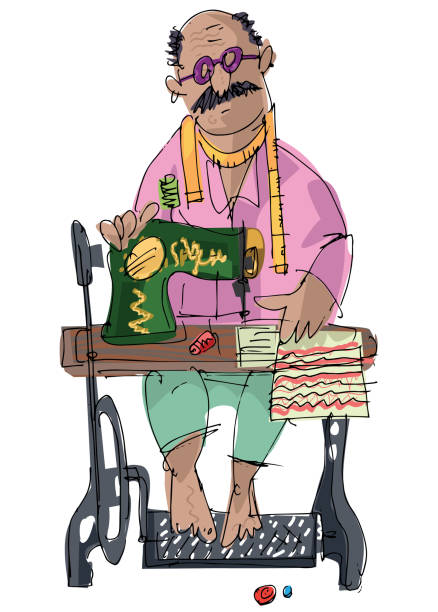Expert Tailor Perth: Crafting Custom Suits for each Event
Expert Tailor Perth: Crafting Custom Suits for each Event
Blog Article
Understanding the Tailoring Process: From Material Choice to Last Fitting for the Perfect Closet
The customizing procedure is a complex interplay of art and scientific research, starting with the vital choice of material selection and culminating in the precise adjustments of final installations. Each fabric kind brings one-of-a-kind top qualities that affect not only the visual appeal yet additionally the garment's long life and viability for different occasions.
Importance of Textile Option
Selecting the best fabric is critical in the customizing process, as it straight affects the comfort, toughness, and overall aesthetic of the final garment (tailor perth). The choice of material sets the foundation for the garment's performance, functionality, and style. Various fabrics possess one-of-a-kind residential properties, such as weight, stretch, and breathability, which can substantially impact how the garment drapes and fits the body
Additionally, fabric choice affects the garment's durability and simplicity of care. High-quality materials can stand up to damage, keeping their appearance and structure in time, while lower-quality materials may lead to pilling or fading. Additionally, the best textile adds to the garment's ability to transition across periods and occasions, consequently enhancing adaptability.
A customized piece made from a suitable material not only showcases workmanship but additionally boosts the wearer's self-confidence. Consequently, understanding the subtleties of textile option is extremely important for any type of customizing undertaking. It makes certain that the final product not only meets the aesthetic desires of the customer but additionally aligns with useful demands, consequently attaining an unified equilibrium in between type and function in the customized wardrobe.
Types of Fabrics and Their Uses
Comprehending the numerous sorts of fabrics offered is crucial for making educated choices throughout the tailoring procedure. Each material has unique characteristics that dictate its viability for specific garments and occasions.
Its adaptability permits it to be tailored into everything from shirts to dresses. Its natural flexibility helps garments preserve shape over time.
Silk emanates deluxe and is lightweight, making it best for eveningwear and fragile blouses; nonetheless, it calls for cautious handling due to its frailty. Bed linen, with its distinctive surface, is a prominent selection for cozy climates, offering a crisp and airy feel, but it wrinkles quickly, which might influence the garment's look.
Synthetic textiles, such as polyester and nylon, deal durability and resistance to creases, making them appropriate for everyday wear and energetic clothing. Recognizing these textile kinds and their properties enables for far better decision-making, making sure that each customized item not just fits well yet also straightens with the desired purpose and occasion.
The Tailoring Techniques Discussed
The art of customizing relies upon a range of methods that change textile into well-fitted garments. Central to this procedure is pattern preparing, where a dressmaker develops templates based upon the client's measurements and desired style. This preliminary step makes sure that the garment will certainly fit the wearer effectively prior to any cutting happens.
As soon as patterns are developed, reducing techniques enter play. Precision is critical as inaccuracies can lead to misfitting garments. Tailors frequently utilize different reducing methods, such as single-layer cutting for complex styles and multiple-layer cutting for efficiency on conventional patterns.
Basting is another necessary technique, enabling dressmakers to momentarily sew textile assemble More Help for an initial installation. This technique provides the chance to analyze the drape and overall shape before last sewing.
Seaming methods, including flat-felled joints and French seams, enhance the garment's sturdiness and aesthetic appeal. Tailors likewise use methods such as interfacing and cushioning to provide framework and shape to details areas, like collars and shoulders.
Last but not least, completing methods, including hemming and edge finishing, make certain the garment's durability while supplying a polished appearance. Together, these techniques form the foundation of reliable customizing, resulting in splendid, tailor-made apparel.
Suitable Changes and Factors To Consider

Trick factors to consider include the shoulder fit, which needs to neither sag nor restrict movement, and the sleeve size, which ought to permit for comfortable arm activity while preserving a refined look. In addition, changes at the midsection can refine the silhouette, with alternatives to allow out or absorb material as needed.
The surge of trousers is one more essential variable; it ought to rest conveniently above the hips without causing pain, allowing for convenience of motion. Hemming sizes for both pants and skirts should show the wearer's preferred design while appreciating proportions.

Maintaining Your Tailored Clothing
Constantly follow the treatment label directions, which might advise dry cleansing for delicate materials or device washing for even more resilient materials. Prevent regular laundering, as this can put on down the material and change the garment's shape.
Storage space is similarly crucial; usage padded wall mounts for jackets and layers to maintain shoulder framework, and store pants folded neatly or hung to avoid creasing. Protect garments from direct sunshine, which can discolor shades and damages fibers.
In addition, periodic evaluations for small fixings can avoid larger concerns. Look for loosened buttons, fraying joints, or signs of moth damage, dealing with these problems without delay to maintain the garment's integrity.
Last but not least, take into consideration seasonal rotation. Using customized items in small amounts enables fabrics to recuperate, extending their lifespan. By executing these upkeep approaches, you can make certain that your tailored garments stay as immaculate as the day you first wore them, boosting your suitable wardrobe for years to find here come.
Verdict
The tailoring procedure, including fabric choice, experienced techniques, and exact fitting adjustments, plays a crucial role in creating garments that boost both convenience and style. Each phase adds to the total efficiency of the last product, guaranteeing that clothing not only fits well yet additionally shows specific identity. Comprehending the relevance of upkeep extends the life of customized garments, strengthening their worth in a well-curated closet. A comprehensive approach to customizing culminates in a refined and certain appearance.
Choosing the best material is critical in the tailoring procedure, as it directly influences the convenience, toughness, and overall visual of the final garment. The option of textile establishes the structure for the garment's style, capability, and performance. Different materials possess distinct residential or commercial properties, such as breathability, weight, and stretch, which can significantly impact just how the garment drapes and fits the body.
The art of tailoring depends on a selection of methods that transform fabric into well-fitted garments.The tailoring process, incorporating textile selection, proficient strategies, and specific fitting changes, plays a critical function in producing garments that enhance both comfort and design.
Report this page